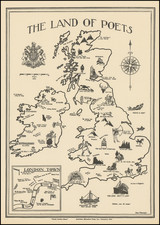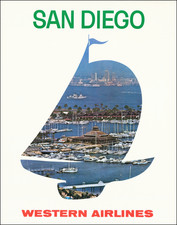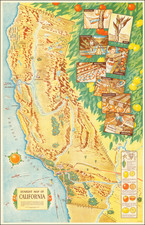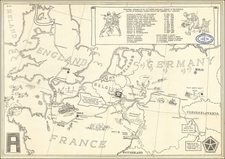An Early African Tourism / Safari Map in Portuguese Mozambique
Detailed pictorial map of the Gorongosa National Park, published by the Mozambique National Press.
The map shows the outlines of the park, major roads, rivers, and areas where various types of wildlife could be seen. An airstrip at Chitengo, the primary tourist camp, is shown, as are the entrance gates and small settlements within the park.
The verso includes a larger map of Portuguese Mozambique locating Gorgonosa and showing other roads and airstrips. Also included is a map of the Chitengo airstrip and abrlief history of "The National Game Reserve of Gorongosa".
Gorongosa National Park is at the southern end of the Great African Rift Valley in the heart of central Mozambique and consists of over 1,500 square miles of valley floor and parts of surrounding plateaus. The park is home to a rich and dense wildlife population, among the most diverse in Africa.
The history of the park dates to 1920, during the period when Mozambique was a Portuguese colony, when the Mozambique Company set aside a large tract of land as a hunting reserve for company administrators and their guests. The British and French financed Mozambique Company opened Gorongosa preserve commercially for foreign game hunters while the local Gorongosans were encouraged to work on cotton plantations.
In 1935, Jose Henriques Coimbra became the reserve warden and Jose Ferreira was appointed as its first official guide. The Mozambique Company also tripled the size of the reserve to protect habitat for nyala and black rhino, both highly prized hunting trophies. In 1940, a new administrative headquarters and tourist camp was built near the Mussicadzi River, only to be abandoned due to flooding in 1942. The abandoned site became a popular tourist attraction, known as Casa dos Leões (the area with huts in the circle at the lower center of the map). Over time, the emphasis of the tourists increasingly changed from hunting to wildlife observation and photography.
In 1960, the Portuguese changed the status of Gorgongosa from hunting reserve to National Park, ending decades of game hunting in the preserve and refocusing on preserving and studying the wildlife populatin.. Between 1963 and 1965, the Chitengo tourist camp was expanded to accommodate 100 overnight guests. Beginning in the late 1960s, the earliest serious scientific studies of the Park were organized by Armando Rosinha, Director of Gorongosa, and Kenneth Tinley, an Australian ecologist. In the first-ever aerial survey, Tinley and his team counted about 200 lions, 2,200 elephants, 14,000 African buffalo, 5,500 wildebeest, 3,000 zebras, 3,500 waterbuck, 2,000 impala, 3,500 hippos, and herds of eland, sable antelope and over 500 hartebeest .
Rarity
The map is not recorded in OCLC. We were not able to find any other examples.











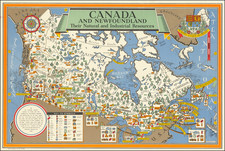
![The Mother Lode of California [Guide to the Mother Lode Mariposa to Downieville]](https://storage.googleapis.com/raremaps/img/small/97535.jpg)
